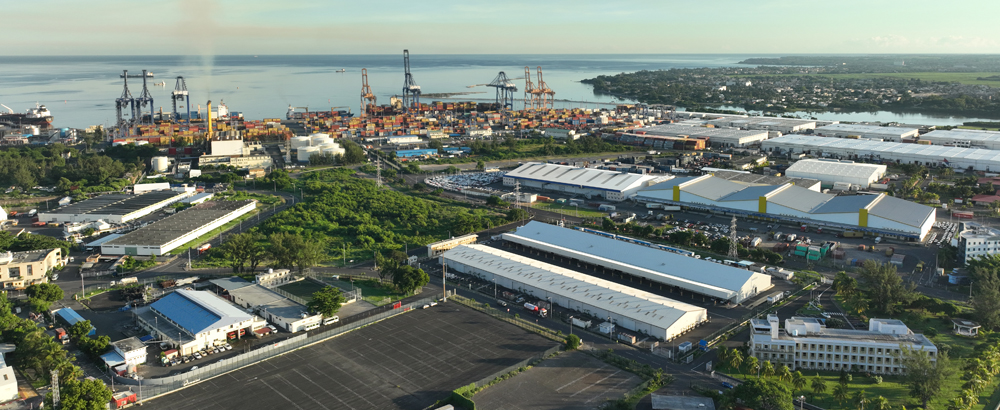This website uses cookies to help us give you the best experience when you visit our website. By continuing to use this website, you consent to our use of these cookies.
Green Initiatives at Port Louis Harbour
Green Initiatives at Port Louis Harbour
The Mauritius Ports Authority (MPA) recognizes the need to conduct port activities in a sustainable and climate friendly manner, in line with its Greenport Initiatives (GPI).
The MPA is a member of the International Association of Ports and Harbours (IAPH) which, on 12 May 2017, decided to set up the World Ports Sustainability Program (WPSP). The WPSP builds on the World Ports Climate Initiative (WPCI) that the IAPH started in 2008 and extends to other areas of sustainable development.

Ports subscribe to the Paris Agreement on Climate Change which aims to keep global warming well below 2° C and as close as possible to 1.5° C above pre-industrial levels. Building on the output of the WCPI, ports community actors worldwide are collaborating in refining and developing tools to facilitate the reduction of CO₂ emissions from shipping, port and landside operations. In addition, they are taking initiatives to enable energy transition, improve air quality and stimulate circular economy.
It is in this context that the MPA, with the technical assistance and funding of the Indian Ocean Commission/World Bank, commissioned a feasibility study to define the preferred/best approach for reducing emissions from cruise ships. Onshore power supply (OPS) is one of the strategies recommended by the WPSP for reducing the environmental impact of seagoing vessels in ports. When berthed, ships require electricity to support activities like loading, unloading, heating, air conditioning, lighting and other onboard activities.
Currently, this power is provided by auxiliary generators that emit carbon dioxide (CO2), oxides of nitrogen, sulphur and other air pollutants, affecting local air quality and ultimately the health of both port workers and nearby residents. The generators also create a noise nuisance. As an alternative to onboard power generation, vessels can be connected to an onshore power supply, normally the local electricity grid.
This study, which was completed in May 2022, has the objective to analyse the technical feasibility, financial viability and environmental benefits of using shore sourced power on cruise ships moored at the newly constructed Port Louis Cruise Terminal.
The study also includes a brief review of the other opportunities for reducing the environmental impact of other operations in Port Louis harbour, focused on their use of hydrocarbon fuel. This initiative is also aligned with the Initial IMO Strategy on reduction of GHG emissions from ships which calls, amongst other initiatives, for the encouragement of port developments and activities globally to facilitate the reduction of GHG emissions from shipping, including provision of ship and shoreside/onshore power supply from renewable sources.

MPA is also actively participating at the level of the International Association of Ports & Harbours (IAPH) – the IAPH occupies an influential seat at the table of the International Maritime Organization, with both shipping and ports now beginning to open meaningful dialogues together on climate action, digitalization, trade facilitation and environmental performance. In consideration to the above, it has been proposed to use the Feasibility Study on the Shore Power at Port Louis Harbour as a Case Study in the development an OPS Training Package under the GreenVoyage2050 Project.
The Authority has pursued its efforts towards sustainability and in this context, steps have been taken to leverage the substantial energy savings that can be obtained through the adoption of new technologies and use of renewable energy sources – in this regard, MPA has installed a Solar Photo Voltaic (SPV) plant of 10 kWp capacity at the Oil Jetty to power the electrical system.
This initiative falls under the purview of the project financed by the EU Technical Cooperation Facility in 2012 for the appointment of a Consultant to conduct a study with the objective of making Port Louis Harbour a Green Port. Based on the recommendations of the Consultants, steps have been taken to implement energy efficiency and renewable energy measures that have the potential to reduce greenhouse gas emissions (GHG).
Towards this end, the services of an experienced consulting firm have already been retained for the implementation of a Solar PV project which will allow the MPA to tap further the potential of Renewable Energy in the port. Three sites have been identified for the installation of solar panels and funding in the form of a grant is being explored for implementation on pilot basis. SPV is viable when contextualized within the Green Port Initiative and World Ports Climate Initiative (WPCI) and at the national/ international level, climate change mitigation strategy supports the PV option. MPA’s efforts are also aligned to the implementation of renewable energy initiatives to ultimately achieve the national targets of 35% and 60% renewables in the electricity generation mix in 2025 and 2030 respectively.
Under the GPI, steps have already been taken not only for the implementation of Solar PV but also for the application of energy efficient lighting & air conditioning systems at the administrative buildings of the MPA, including a shift towards electric vehicles. In this respect, future actions are being envisaged by the MPA in areas where there are further potentials for GHG emissions reductions. The overall objective of these initiatives is to increase availability and use of energy from renewable sources and efficiency levels in the consumption of energy.
